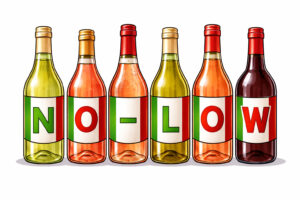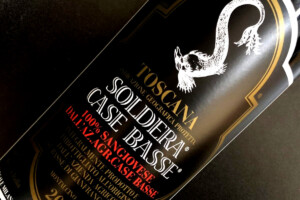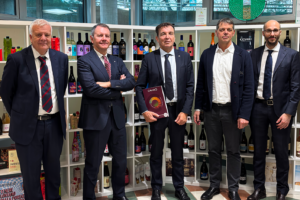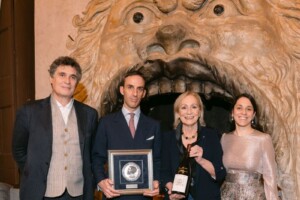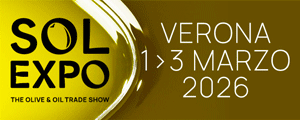The Stars and Stripes market is undoubtedly the most important one for Italian wines. The numbers do the talking: in 2011, Italy was confirmed Queen of wine exports to the States, with a 13% increase in volume compared to 2010 (2.5 million hectoliters) and 16% increase in value (1.25 billion dollars). And there is more. Italy holds a 28.4% market share of foreign wines in volume, and 34.3% in value, far ahead of Australia, the number 2 Country for wines imported into the U.S.
So, "What should Italian producers do to sell more wine in the United States?" This question, which is also the title of the VeronaFiere conference today at Vinitaly, has been asked of some of the most important people in the U.S. wine world. And of course, the question couldn’t be asked without reiterating that "the American market is the most important,” said Sergio Esposito journalist and CEO of Italian Wine Merchants, “for Italian brands. The strength the brand achieves in the United States is the calling card for the markets in the rest of America and the world”.
On the other hand, "the American market is complex,” said David Francke, manager of Folio Fine Wine, “and is not approachable without taking into account the so-called "three-tier system" (importer - distributor - retailer). In reality this is not one, single market but 50 different markets. Each State has its own trade laws on alcohol, but the "three-tier system" is the lowest common denominator that unites all the States. It is not possible, by law, to skip over one of the “tiers”. So,” said Francke, “it is key to know the market in detail: i.e., to know the laws of every state as well as the federal laws”.
For those who already sell their wines in the United States "the future is positive,” says Giuseppe Lo Cascio, brand manager for Winebow Import, “Italian wine has the greatest potential. Still wines are growing by 40% and sparkling wines by 35%. All wines are up 15% and, in particular Amarone and Brunello, mark a further 5% increase. Italian wines are easier to understand than French for American consumers - they accompany Italian cuisine, whose restaurants in America are the only ones that do not close and are perceived as a kind of container for Italian food and wine. There is,” added Lo Cascio, “a trend that goes from drinking beer to Prosecco, all the way up to the finest Italian wines. The most popular Italian wines at the moment”, said the Winebow brand manger, “are from Southern Italy, in the native grapes and classic version, with Amarone and Brunello at the top”.
In general, the American market, which is in no uncertain terms the market of choice for all kinds of merchandise, does not provide clear and definitive answers about wine. "It is difficult to determine exactly what American wine consumers buy, because the American market is split up,” pointed out Francke, “and characterized by a desire to “explore” brands and types, especially by younger consumers who are more open and willing to understand these wines. The price range instead, is easy to determine: $15.00 in a market where the threshold of regular wine consumers stays stable at the 9 million mark”.
Some new wine trends are emerging, however and the wine writer for Wine Spectator, Alison Napjus, has taken note of them: "something has definitely changed in American customers preferences: there is a growing interest in Italian wines from local grape varieties, which is a rich and multifaceted panorama because there is a desire to drink something new and different from what their parents drank”. A marked impact also comes from what happens on the Internet, not the phenomenon of "social networks", but electronic commerce. "50% of the online wine consumers who buy bottles on our site,” said the site manager Rodolphe Boulanger www.lot18.com, “are under 45. Since shipping costs are the most expensive item on the orders, they don’t buy 7-dollar wines. Our orders on average are 22-23 dollar wines; prestigious wines like Amarone and Brunello, that, and this is the new trend, young people are drinking.
Young people want to experiment,” said Boulanger, “and learn. In this sense, Internet represents a real way of getting more resources and points of view to learn how to drink and appreciate wine”.
The Internet has enormous growth potential and "the wine producers must be there and tell their stories. Internet is opening up possibilities unthinkable not long ago: for example, wine tasting on Skype. But American consumers,” - said Francke, “that are doing more shopping online, do not seem convinced yet to buy wine on the network, because wine has to be tasted”.
So, real economy continues to prevail. "We must continue to sell in New York, because if you can sell there you can sell all over America,” said Lars Leicht, vice president of U.S. Banfi, “but you're in a place of greater competition. Getting to the heart of the United States, for example in Kansas, is complicated, but then competitors do not pressure you and selling is easier. Italian wines sell well in California even though California wines are the most important wines sold in the United States. In terms of distribution, the weight of supermarkets in the U.S. is growing,” Leicht concluded “and the market is polarized: on one hand the large supermarket chains buy wines for everyday consumption and on the other exclusive wine bars buy the fine wines. "Not to mention,” says Lo Cascio, "in the U.S., more than in other places, the market is made up of personal relationships and physical contact”.
More energy is coming from the network “front”. "Up to 15 years ago, books and magazines represented the privileged media for wine culture,” said Boulanger, “now that there is Internet, there is not just one channel, not just one way. We put wine ratings in our presentations but also insert them in our reviews. It is probably more exciting,” said Boulanger, “to buy and drink a wine with a story or a surprising price, rather than to always drink a 90 point rated wine ".
Napjus of Wine Spectator agrees: " the consumer now seems geared to a balance between price and quality, rather than ratings. The most popular price range is between 17 and 23 dollars. "But things are changing even in terms of taste,” he added, “the American palate is becoming more sophisticated: building a wine on the patterns of the so-called "American taste" can still be successful but short-lived, because it is much important to bottle the best production in the company”.
This is a signal that somehow reflects a "new course” in the U.S. where "they are slowly coming around to the idea of not imposing a wine on what we eat and,” reported Francke, “thanks to the green movement, especially in certain areas like San Francisco, there is a growing consensus towards more authentic wines”.
Copyright © 2000/2026
Contatti: info@winenews.it
Seguici anche su Twitter: @WineNewsIt
Seguici anche su Facebook: @winenewsit
Questo articolo è tratto dall'archivio di WineNews - Tutti i diritti riservati - Copyright © 2000/2026













